Want to launch a business website? Is it in the planning stage and the design team is in a dilemma about how to make it accessible and inclusive enough? ‘Personas’ is the keyword for you!
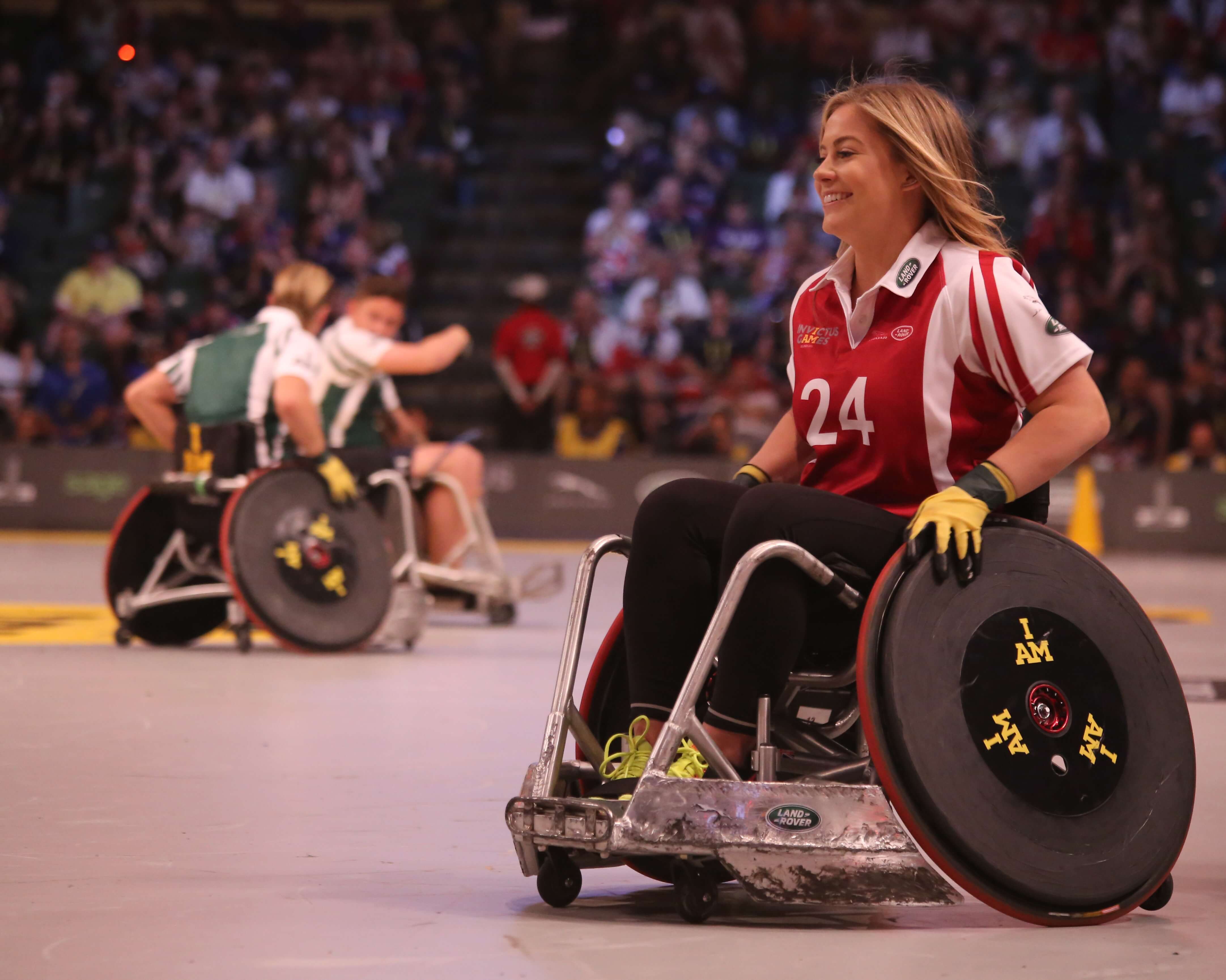
One of the most significant design strategies to emerge from the user-centered design movement in computing in the mid-80s was Personas. This UX Design methodology is the characterization of a user who represents a segment of your target audience.
Personas are formed from extensive research to better understand an individual who can be real/future users. Their issues and challenges are a prerequisite at the definition phase of a project itself. Where they are treated as references that ensure compilation of disabilities and the design decision is made in service of the personas that were identified.
Specific characteristics, demographics, experience level, and personal details of an individual with disabilities are included while forming adaptive strategies for the product/service in question. Enabling designers, developers, and evaluators across a project to keep a broad and diverse collection of stakeholders in mind, personas serve as behavioral models. Considering the needs, interests and daily tasks of non-obvious or non-traditional users. Personas can evolve with accuracy throughout the design process as new research emerges.
Why Inclusive Design?
A design that is usable and enables maximum people possible to use the product, is called inclusive and eventually successful. When a diverse set of users with multiple perspectives come across a product/service, the reactions are naturally different and individualistic. Thus, organizations catering to millions of users with one single design need to think about engaging users from different environments. The ultimate goal of an inclusive design should be to make people participate and gather a wide spectrum of human experience. In order to achieve this, different communities and groups of minorities should help in identifying points of exclusion and explore possible solutions.
Pyramid Model of Diversity
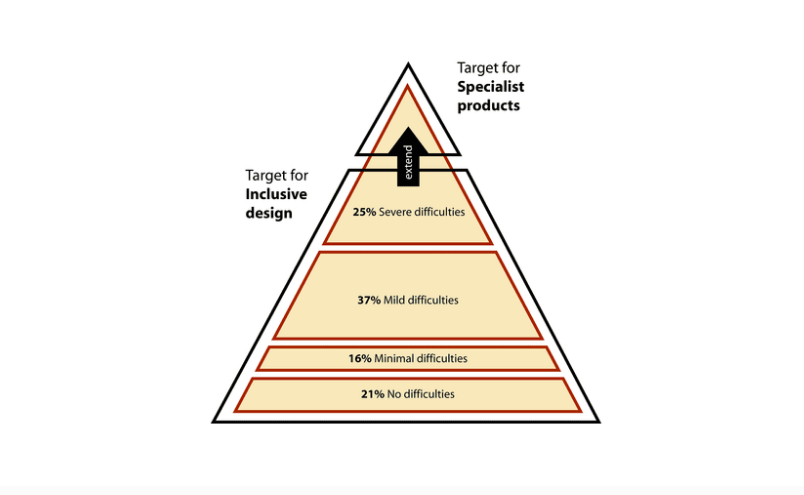
Inclusive design vs Accessibility
Accessibility is commonly interpreted in terms of color contrasts and font sizes. But taking the accessible design approach, one has to consider the needs of people with specific impairments too.
Accessibility in technology is one of the core objectives of an organization when catering their product/services to a large number of people. But, inclusive design is a process or methodology incorporated to obtain that objective. The aim of accessibility finishes when people with disabilities are included and considered. But, an inclusive product makes sure that it’s usable to a larger diversity and allows fluidity.
Using Personas as an Inclusive Design Tool
A project requires keeping the stakeholders in check. Personas are backed by market research to represent the expected or ideal users we should be designing for. With hypothetical situations and conditions, you can shape the goal and solution for a specific persona according to his/her needs and wants:
They are important for validating design decisions, prioritizing features, and guiding your team. Here are a few scenarios and probable solutions:
Deaf
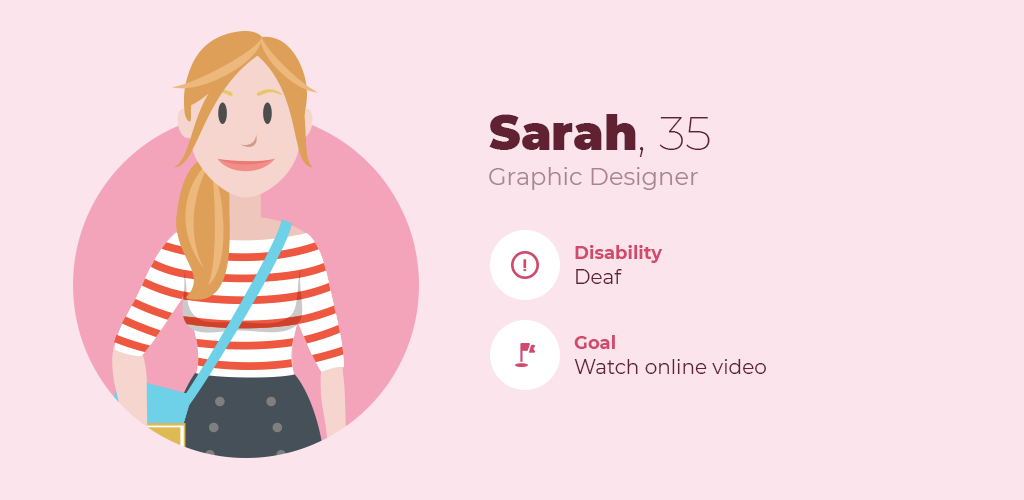
Solution:
- Make sure videos have captions or transcripts
- Hand-captioning is best, but automatic captioning is better than nothing at all
- Transcripts and captions are different and both are important
Mobility Disability
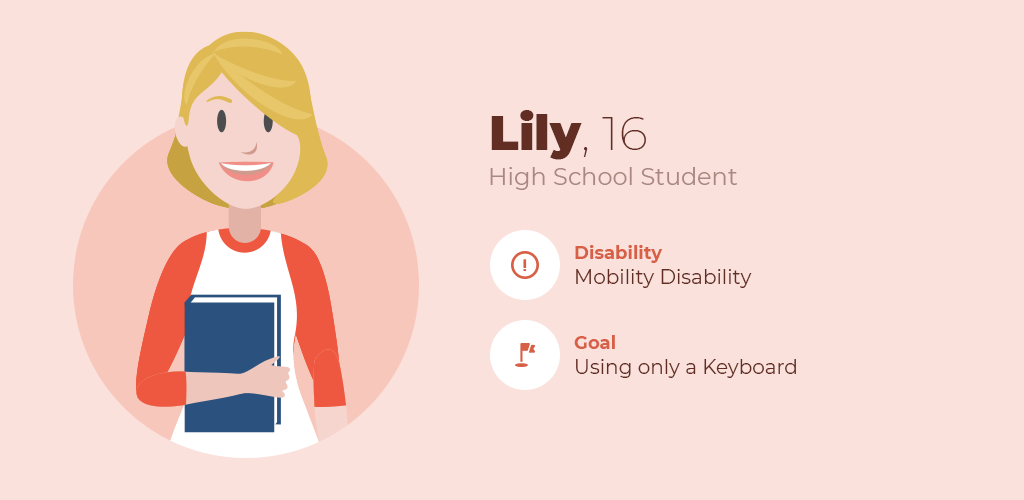
Solutions:
- Plan out heading and page structure - making sense to all users and devices
- Place important actions at the top or bottom of the page
- Use skip links and don’t forget your focus indicators
Colour Blindness
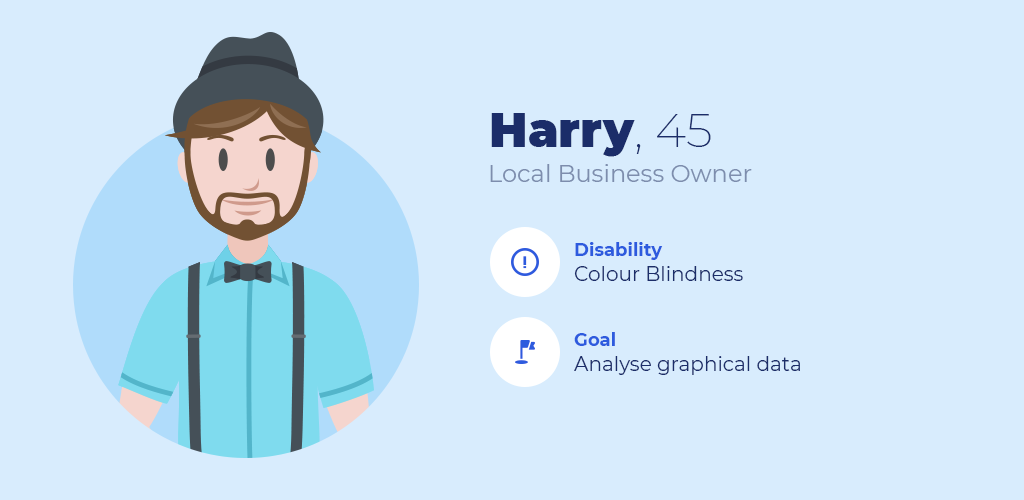
Solutions:
- Make sure color is not the only identifier
- Use tools to stimulate what your site or app would look like for different types of color blindness
- Test color contrast levels for grayscale too
Blindness
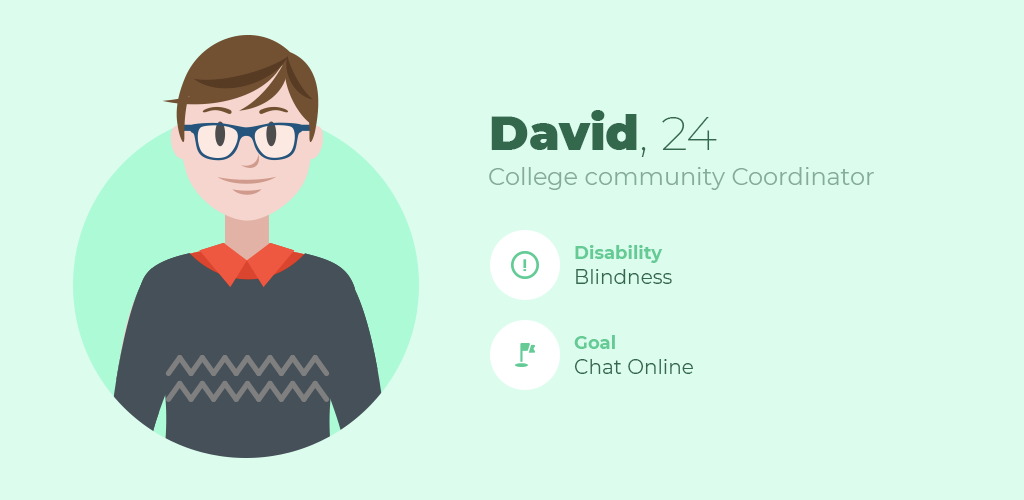
Solutions:
- Turn on the “compose image description’’ on your twitter account: Setting > Accessibility
- Add context to image posts on all social media platforms
- Think about Alt text like a tweet. Aim to briefly convey as much info as possible
Dyslexia
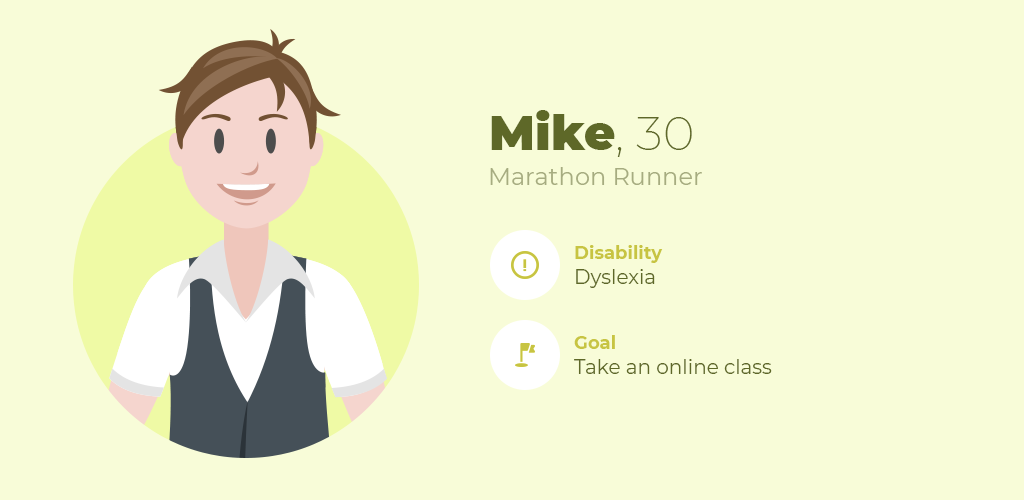
Solutions:
- Use an inclusive font in relative units like rems and ems
- Make sure to add enough margins, padding, and line spacing to your text
- Break text into small pieces or use bullet points/numbers
Individual Differences
Though everyone counts on accessibility and designers tries to include the most common disabilities but a majority of them lose out on challenges that are out of their comfort zone. It is common to surpass the variability among users and not focus on the inclusiveness of others. But personas help to include them remind us about the importance of inclusive design.
Conclusion
People are distinctive and diverse. We cannot place everyone using our products under the same umbrella. There will be different experiences, different expectations, and different preferences. Organizations should aim to be inclusive and bring unique identities to the forefront to create stories and pain points that can be solved in the product.
Want to design your product for an inclusive audience? OpenSenseLabs would look to guide you in your endeavor. Drop a line at [email protected].
Subscribe
Related Blogs
UX Best Practices for Website Integrations

Website Integrations determine whether users stay engaged or abandon a site. I experienced this firsthand with a delivery…
How design thinking acts as a problem solving strategy?

The concept of design thinking is gaining popularity these days since people across different industries are using it as a…
10 major challenges that come across during an agile transformation

It’s no longer a mystery that agile was created as a response to the various concerns that the traditional waterfall…




